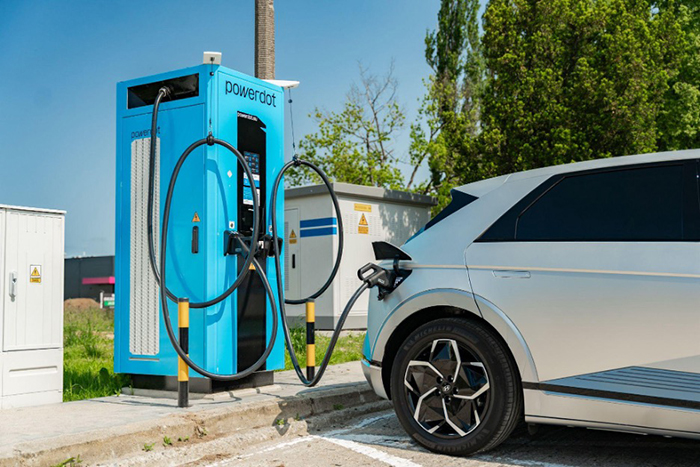The transportation industry is experiencing a seismic shift, with electric vehicles (EVs) leading the charge into a more sustainable, efficient, and innovative future. From advancements in EV technology to the growing infrastructure supporting them, the rise of EVs marks the beginning of a new era in mobility. But what exactly is driving this transformation, and how will it shape the way we travel, work, and even sell car privately or consider vehicles’ resale value? This blog explores the key factors behind the EV revolution and its far-reaching impact.
What’s Fueling the Transition to Electric Vehicles?
Electric vehicles have gained significant traction in recent years, and several factors are fueling their rapid adoption. These include:
1. Environmental Awareness and Climate Goals
The growing awareness of environmental challenges has prompted many individuals, businesses, and governments to advocate for cleaner energy solutions. Since traditional internal combustion engine (ICE) vehicles contribute heavily to greenhouse gas emissions, EVs, powered by renewable energy sources, are seen as a sustainable alternative. Countries worldwide are setting ambitious climate goals, such as achieving net-zero emissions by 2050, further encouraging the shift.
2. Government Incentives and Policies
Governments are playing a major role in accelerating the EV adoption rate through financial incentives, subsidies, and tax benefits. For example, in the United States, buyers can receive federal tax credits of up to $7,500 on the purchase of certain EV models. Policies like ICE vehicle bans in cities and investment in public charging stations are also encouraging consumers to switch.
3. Advancements in Battery Technology
The development of lithium-ion batteries and the emergence of solid-state battery technology have revolutionized electric vehicles. These batteries are lighter, cheaper, and more energy-efficient, providing faster charging times and extended ranges. Advances in battery technology have addressed “range anxiety,” one of the major barriers for consumers hesitant to adopt EVs.
4. Lower Operating Costs
EV ownership often proves more economical in the long run. These vehicles require less maintenance than traditional cars because they have fewer moving parts. Additionally, electricity is significantly cheaper than gasoline, further reducing the total cost of ownership.
5. Growing EV Variety and Market Competition
The days of having limited EV options are gone. Automakers like Tesla, Ford, GM, and Volkswagen now offer multiple electric models, ranging from family-friendly SUVs to luxury sedans. This variety caters to a broad audience, allowing potential buyers to find an EV that fits their needs, lifestyle, and budget.
The Role of Technology in Advancing EVs
Technology is the backbone of the electric vehicle revolution. Advancements across artificial intelligence, battery systems, software integration, and connectivity are making EVs not only feasible but also preferable to ICE vehicles. Here are some of the most critical technological trends driving the future of EVs:
Autonomous Driving
Many EV makers are at the forefront of autonomous driving technology. Companies such as Tesla and Waymo are heavily investing in self-driving systems that use real-time data, sensors, cameras, and artificial intelligence to make driving safer and more efficient. While fully automated electric cars are still in development, vehicles with semi-autonomous features like lane-keeping assistance and adaptive cruise control are already mainstream.
Vehicle-to-Grid (V2G) Technology
A revolutionary concept for energy management, vehicle-to-grid (V2G) technology allows EVs to function as mobile energy sources. Owners can sell surplus electricity stored in their vehicle batteries back to the grid, helping stabilize power supply during peak demand or emergencies. This has the potential to transform EVs into cost-saving investments for consumers.
Charging Infrastructure Innovations
Technological advancements in charging solutions have been a game-changer for EV adoption. High-speed EV chargers, like those from Tesla’s Supercharger network, can charge a car up to 80% in under 30 minutes. Wireless or inductive charging, which eliminates the need for physical plug-ins, is also gaining traction. Furthermore, companies are exploring solar-powered charging units, further reducing the carbon footprint.
Over-the-Air (OTA) Updates
The software in an electric vehicle is as important as its hardware. EVs equipped with advanced connectivity features can receive over-the-air (OTA) updates from manufacturers. This means software bugs can be fixed, new features added, and performance enhanced remotely, ensuring the vehicle stays up to date, much like a smartphone.
Connectivity and Smart Features
Electric vehicles are becoming smarter with each passing year. Features such as real-time navigation optimized for EV battery efficiency, remote diagnostics, and app-based controls (like pre-conditioning the cabin temperature) offer enhanced convenience and control to drivers.
How EVs Are Reshaping Transportation Systems
The rise of EVs is not just about greener cars; it’s about revolutionizing transportation systems as a whole. Here’s how:
Urban Mobility
With more people gravitating toward urban living, the demand for smaller, more efficient, and environmentally friendly commuting solutions is increasing. EVs, along with e-scooters and electric bikes, are becoming integral to urban planning efforts aimed at minimizing congestion and pollution.
Fleet Transformation
Businesses with large fleets, such as delivery companies and ride-hailing services, are switching to EVs to reduce operational costs and their environmental footprint. Amazon, for example, has committed to deploying 100,000 electric delivery vehicles by 2030.
Sell Car by Owner Trends
The adoption of EVs is also impacting how vehicles are sold. Many owners of traditional ICE vehicles are choosing to sell your car privately before switching to an EV. Similarly, EV owners benefit from certain advantages, such as strong resale value due to the growing demand for used EVs. The convenience and savings often motivate individuals seeking to sell car by owner to invest in cleaner and smarter transportation options.
Challenges and Opportunities Ahead
While the future of EVs looks bright, challenges remain. Charging infrastructure, though increasing rapidly, still lags behind demand in certain areas, particularly rural regions. The environmental impact of mining materials for batteries raises ethical and ecological concerns, prompting the need for sustainable sourcing solutions.
However, these challenges also create opportunities for innovation. Enhanced battery recycling methods, alternative materials, and collaborations between the private and public sectors can address these hurdles and further accelerate the EV transition.
Why the Rise of EVs Matters
The rise of electric vehicles is more than just a trend; it’s a turning point in how we think about mobility, energy, and sustainability. By adopting EVs, we’re reducing our reliance on fossil fuels, improving air quality, and paving the way for smarter and more resilient transportation systems.
Whether you’re a business professional, a car enthusiast, or someone looking to sell your car privately and make the switch to an EV, now is the perfect time to explore the possibilities.
Closing Thoughts
The future of transportation is electric, fueled by advancements in technology, growing awareness of sustainable living, and a collective push for innovation. The rise of EVs is a testament to how technology can reshape industries and inspire a more sustainable and connected world.
Curious about the latest EV trends or how they might impact your decision to sell car by owner? Stay tuned to learn how electrified transportation is creating a road map to a future that benefits us all.



































